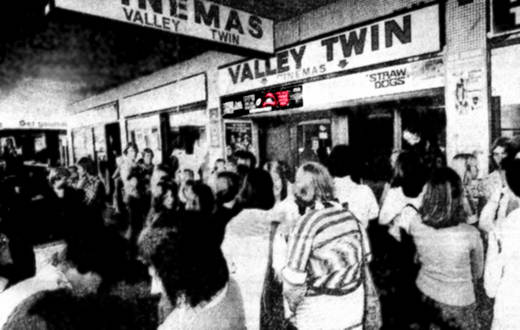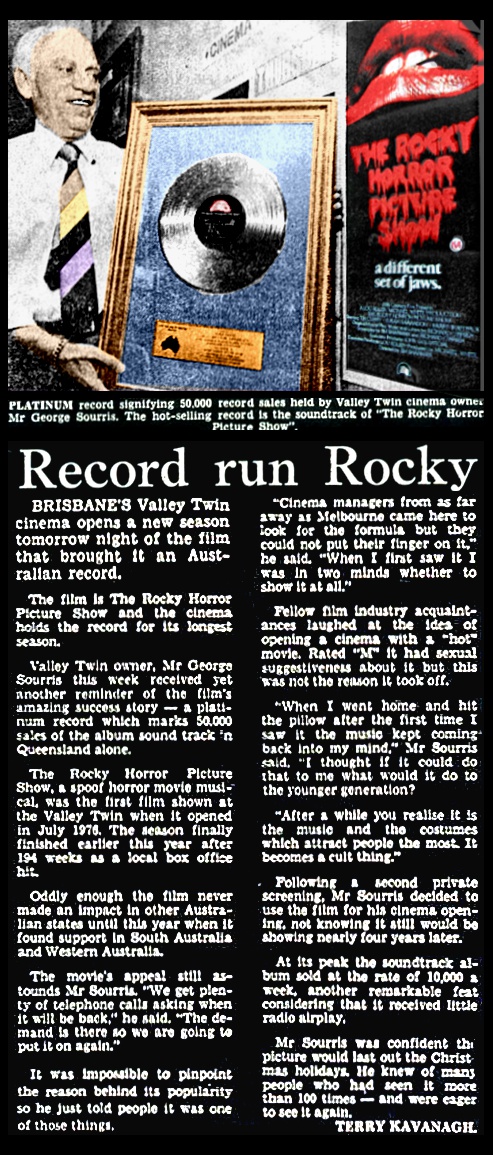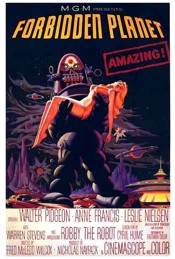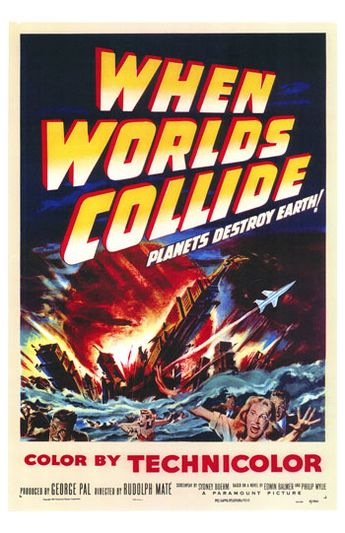|
 |
 |
|

|
| The Director: Jim Sharman |
 |
|
| The Designer: Brian Thomson |

|
| The Editor: Graeme Clifford |
|
| The Actress: Little Nell (Nell Campbell) |
|
| The Voice of Rocky: Trevor White |
|
As much as I love the film version of Rocky Horror, it isn't as good as the live show, Lou Adler's influences did weaken the original intent as he did with the American stage production. For what seems like compensation we are treated to many Hammer Horror references that would have been lost on an American audience. The "creation" scene is based on the creation scene from Hammer Studio's The Curse of Frankenstein, the actual tank was used 9standing upright) in The Revenge of Frankenstein.

The house,


Some changes were made to the script, where the show had no specific time setting, the film pins it down to Nixon's resignation (an event that was considered a "loss of innocence" itself), although many young patrons wouldn't recognise the speech broadcast on the car radio; Brad's verse from Over at The Frankenstein Place is cut from the film; in the play the house is empty except for the owner and staff, the film provides a full cast of visitors attending a party to shock the young couple; instead of being greeted with Sweet Transvestite which brought ultimate surprise in the live show, they are greeted by the Time Warp as a party song in the film followed by Frank arriving via an elevator. Frank's wondrous creation speech that had grown into a full blown monologue in Sydney's stage version, on film was a brief event and to me the worst scene in the film. The Charles Atlas song in the stage show is about Frank's having seen this advertisment in a magazine for Dynamic Tension which says it can make you a man in 7 days, he later reprises the song saying that HE can make a man in 7 days, in the film the references to the advertisment are dropped and Frank's song about Charles Atlas is no longer as clever. Brad's song Once in a While is cut from the film, and some of the narrator's dialogue is shortened. In the final cut of the film, Super Heroes and the Science Fiction reprise are also cut. The result is a fun-filled if somewhat hard to understand romp, a fine souvenir (if somewhat watered down) of an incredible show and era. Interesting to note that when the film first played in London, the audience booed, when they saw that Brad was being played by an American. The film took longest to catch on in London (once the show lost it's derelict cinema setting, the film found favour).
The Motion Picture from a Queenslander's Point of View

Crowd outside the Valley Twin in 1977
|
|
The Motion Picture opened in the Southern Australian states on 18th December 1975, but didn't open in Queensland till July 1976. Perhaps it was because the original show had never played in Queensland, whereas it had just finished in Sydney and was still playing in Melbourne, that the film was a major success from day one in my State. The Valley Twin Cinemas 220 Brunswick Street, Fortitude Valley, Brisbane (the strip club and gay bar part of town), ran the film to an incredibly enthusiastic audience; a phenomenon spreading state-wide. The new Twin Cinemas, wanted something exciting for their opening. The owners reviewed the film and believed it would be a hit, despite it's failure in other states, and they were right. It became the longest daily showing of a movie in the world.
I first saw the film at a little run down movie house in the country town of Kingaroy. Kingaroy was a town of 5000 (although I think they boasted 8,000 on signage), the home of Joh Bjelke Peterson (extememly right wing Premier of Queensland) and the peanut capital of Australia. Somewhat like Richard O'Brien's being whisked away to New Zealand at 10, my family lived at the Gold Coast then moved temporarily to Los Angeles, before at the age of 10 being taken to the red dust town of Kingaroy in country Queensland. My main escape from this place of narrow mindedness was The Princess Theatre; it had once been the town's main hall, but at some point had been converted to a cinema, retaining the large columned facade of a bygone era's early glories, the private rooms at the sides now partially curtained off leaving ominous dark voids at the ends of rows of canvas sling-back chairs. For some reason unknown to me, it was rare to get a current release film, instead the town was treated every Saturday night to a double feature of any 2 films it seems the owner took a fancy to. Luckily for me, this nameless person's tastes ran to the bizarre, which allowed me to experience some of the greatest and worst of the odd and scary. Perhaps it was this that allowed The Rocky Horror Picture Show in late 76 (when I was 14) to strike a chord with this "country bumpkin" crowd. The references weren't lost on an audience used to a diet of Hammer Horror, Carry On comedies and the occaisional foreign, badly dubbed, dead return to life film. The LP was suddenly being played at every school dance and every party. Rocky Horror parties became the thing, with usually uptight country folk donning the get-up and grinding to the Time Warp. The film played twice more in Kingaroy in 77 fuelling the frenzy. I travelled to see it in Brisbane at The Valley Twin many many times over the next 3 years, where it was still playing several times a day. When I read on so many Rocky Horror sites about the film flopping on it's initial release, I don't have any recollection of such, to me in my part of the world, the film was a winner from day one. The Valley Twin was awarded a gold record by 20th Century Fox, for their contribution to record sales of the Soundtrack, reaching 10,000 copies a week in Queensland. By 1980, it made the record for the longest daily shown film in the world, running for 4 years, several times a day.
In Brisbane, my nearest capital city, the film created the same frenzy through the suburbs, making it impossible to be able to get tickets to the film for weeks in advance, as crowds laughed and sang along with a film that not since the bizarre Abba phenonenon in Australia, provided a community feeling of broad proportions. The film continued it's popularity for four years but as attendences beagn to wain the film stopped playing daily and became a weekly, late night film for the long term fans. Never at any point did "audience participation" occur, apart from the obvious singing along, screams and claps of approval as Frank appeared on screen. Audience Participation, as occured in the USA, only came to Sydney in 1979, as audiences became more distant from the source material. In 1976 it was an increcible experience reflecting the morality of the times, now it's nostalgia and for an audience, not raised on Hammer films, it's cult appeal far outways it's original intention of poking fun at a well known genre using the sexual morality of the time. The audience here in 1976 recognised the "old house", had no idea who Susan Sarandon, Tim Curry, Barry Bostwick or Meatloaf were; well known and completely surprising came together in a film directed by an Australian, designed by an Australian and with Australian Ross Campbell's literary charicature of his own daughter "Little Nell" given flesh in a most unforgettable way, how could it not be loved immediately by an audience already spoilt by Jim Sharman's stunning Australian stagings of Hair and Jesus Christ Superstar, that took him and designer Brian Thomson to London to stage the West End production of JCS and the chance meetings that led to Rocky Horror.
The popularity of the film in Queensland, Australia, was rewarded with a RED vinyl copy of the soundtrack only released here.


Supplied by Tony Pazuzu
NOTICE: If anyone has photos they aren't too scared to post of anything Rocky Horror related from the 1970's in Australia, eg. party pics, also if your part of Australia had a different reaction to the film of Rocky Horror at the time please contact me.

  

|
GOD BLESS |
  |

















